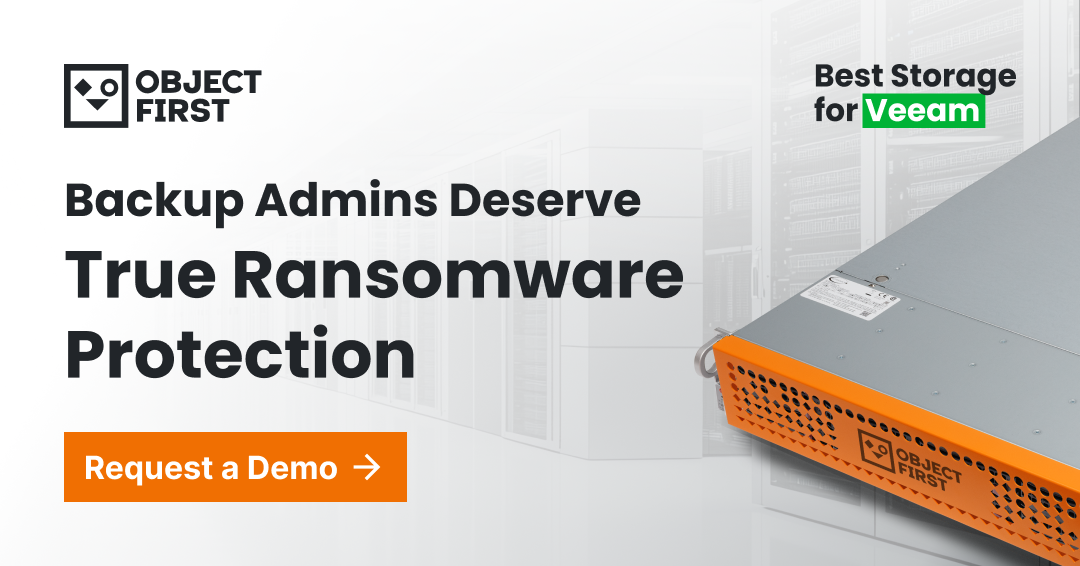Ransomware Protection: The Ultimate Guide for Businesses
Ransomware attacks have surged in recent years, occurring as frequently as every 11 seconds.
Their severe consequences include irreversible data loss, which can lead to financial ruin and significant damage to an organization’s reputation. Such invasions also disrupt operations, erode customer trust, and bring regulatory penalties.
To shield your data effectively, discover the importance of ransomware protection. Learn how to prevent, avoid, and protect against data hijacking and never pay ransom again.
What Is Ransomware Protection?
Ransomware protection is a robust combination of strategies, tools, and practices to safeguard your computer systems and critical data from ransomware attacks.
This protection from ransomware regime starts with fundamental data security measures, which include:
- Robust Authentication: To verify user identities and prevent unauthorized access.
- Anti-malware Software: To detect and block malicious software from infiltrating your systems.
- Network Security Enhancements: To manage network traffic and prevent threats from spreading through your infrastructure.
As an extension of these basic measurements, ransomware protection includes a range of specialized tools for different IT environment layers:
- Firewalls: For network traffic control.
- Email Filters: For scanning incoming messages.
- Antivirus Programs: With ransomware detection.
- Network Monitoring Software: For surveillance of network activity.
These tools work together as a complete defense system, spotting and stopping ransomware threats early to keep your digital assets safe and accessible.
What is a Ransomware Attack, and How Does It Occur?
Ransomware is malicious software that employs encryption to hold your files and systems hostage.
Cybercriminals demand you pay a ransom in exchange for returning your data. However, paying the ransom doesn’t guarantee data recovery and can fuel further criminal activity.
Ransomware operates through a series of steps:
Step One: Infection
Ransomware typically infiltrates systems through deceptive links in phishing emails, malicious downloads, or compromised websites. Attackers often disguise their malware as legitimate files, tricking users into initiating the infection without their knowledge.
Step Two: Encryption
Once inside the system, the ransomware encrypts files using complex algorithms, effectively locking users out of their data. The encryption is typically robust, preventing unauthorized decryption efforts and leaving victims unable to access their files without the attackers’ unique key.
Step Three: Ransom Demand
Following encryption, the ransomware reveals itself by displaying a ransom note on the victim’s screen. The note usually demands payment in cryptocurrencies by a deadline, threatening to increase the ransom or delete data if not paid promptly.
Step Four: Data Hostage
In this final phase, the encrypted data remains inaccessible and held hostage by the attackers. Attempts to open or use the files typically result in error messages, underscoring the attackers’ control over the victim’s data.
Why Is Ransomware Protection Important?
Ransomware attack protection is crucial for shielding organizations from the devastating losses that follow a successful attack.
It ensures business continuity, financial stability, reputation, and compliance with legal standards by:
- Preventing Prolonged Downtime: Ransomware attacks can halt operations for weeks or months. This paralysis leads to lost revenue and decreased productivity. Timely protection is essential to avoid such costly interruptions.
- Mitigating Financial Repercussions: Beyond the immediate impact, these attacks incur significant costs from incident response to recovery efforts. Effective protection strategies can minimize this financial burden.
- Safeguarding Reputation: A company’s image can suffer greatly following a ransomware incident, with a loss of customer faith and confidence. Adequate protection is critical to maintaining the trust and loyalty of customers and stakeholders.
- Avoiding Legal Consequences: Attacks that encrypt sensitive data can result in legal penalties and breaches of regulatory standards. Protection against ransomware plays a vital role in ensuring compliance and avoiding expensive legal issues.
Ransomware Types Explained and Identified
Ransomware continues to evolve, using a variety of tactics to extort victims.
Here’s a breakdown of the main types, each with its own approach:
- Crypto Ransomware (Encryptors): These insidious programs encrypt files and data, holding them hostage until a decryption key is provided, usually in cryptocurrency exchange.
- System Lockers: This variant locks users out of their operating systems, displaying a ransom note that often includes a countdown to add pressure for payment.
- Scareware: It pretends to be genuine security software, tricking users with fake warnings about issues that don’t exist and pressuring them to pay for unnecessary solutions.
- Doxware (Leakware): Doxware leverages the threat of releasing sensitive personal or corporate data to the public, coercing victims to pay up to protect their privacy.
- Ransomware as a Service (RaaS): It’s a disturbing trend where ransomware is offered as a subscription service, enabling even non-technical criminals to launch attacks for a share of the profits.
The Most Dangerous Ransomware Types
Ransomware attacks cost the world $20 billion in 2021. Experts predict this number will increase to $265 billion by 2031.
The digital landscape faces a heightened threat from specific ransomware variants, each with sophisticated disruption methods.
Here are the most notorious ransomware types that target organizations worldwide:
- LockBit: The Russia-linked LockBit ransomware gang notoriously attacked aerospace giant Boeing, showcasing the threat to even the most significant industry players.
- Hive: Rapidly evolving, Hive ransomware has targeted businesses like a Midwest U.S. hospital, causing substantial operational turmoil by encrypting data and demanding enormous ransoms.
- REvil: Known for bold extortion, REvil leveraged a Kaseya VSA server vulnerability, impacting approximately 200 U.S. businesses in a sweeping attack.
- Conti: The Irish Health Service Executive (HSE) fell victim to Conti, enduring severe healthcare service disruptions and facing a $20 million ransom demand after their data was encrypted.
- Maze: When Maze ransomware struck Pensacola, Florida, it crippled city communications and sought a $1 million ransom, leading to prolonged recovery efforts after the city refused to pay.
- Ryuk: Universal Health Services (UHS), with over 400 facilities, was hit by Ryuk in September 2020, causing network outages that led to canceled surgeries and emergency response disruptions.
Strategies for Ransomware Defense
Protecting your digital assets from ransomware is critical. A robust defense combines various solutions to address potential vulnerabilities:
Decryption Tools
Decryption tools are vital for data recovery, offering keys to unlock data from specific ransomware attacks.
The No More Ransom project, a collaborative effort to combat ransomware, provides a public repository of decryption tools, including:
- RannohDecryptor: Targets Rannoh and Cryakl.
- Jigsaw Decryptor: Counters Jigsaw ransomware.
- Shade Decryptor: Takes on Shade/Troldesh.
- GandCrab Decryptor: Decrypts GandCrab-affected files.
- Petya Decryptor: Aids recovery from Petya compromises.
- Chimera Decryptor: Addresses Chimera threats.
Multi-Layered Ransomware Defense
Combatting ransomware requires a sophisticated defense-in-depth strategy integrating multiple security layers across your IT ecosystem.
This approach should encompass not just the perimeter defenses but also the internal layers to ensure comprehensive protection, such as:
- Endpoint Protection: Machine learning-based security to stop ransomware upon entry.
- Network Segmentation: Secure zones to contain and isolate attacks.
- Application Whitelisting: Execution is limited to approved software.
- Intrusion Detection Systems (IDS): Monitors for signs of ransomware.
- Security Information and Event Management (SIEM): Analyzes logs for threat detection.
- Regular Patch Management: Updates systems to mitigate vulnerabilities.
Operating System Protections
Operating systems are foundational to your IT security, and enhancing their built-in protections is vital for a robust ransomware defense strategy.
Here’s how to maximize OS security:
- Built-in Security Features: Like Windows Defender’s controlled folder access.
- Access Controls: Strict permissions and User Account Control to prevent unauthorized changes.
- Advanced Threat Protection (ATP): For ongoing monitoring and automated responses.
- Security Updates: Regular installation of updates to strengthen defenses.
- Security Policies: Via Group Policy to manage access and configurations.
- System Hardening: Minimize risks by turning off unnecessary features.
Immutable Backups
Immutable backups are a critical component in ransomware defense, providing a fail-safe for data recovery.
You can leverage them effectively by employing:
- WORM Storage: Ensures backups remain unaltered.
- Air-Gapped Backups: Isolation from networks prevents ransomware access.
- Snapshot Protections: Regular, unalterable data snapshots.
- Backup Verification: Automated checks to confirm backup integrity.
- Backup Encryption: Protects backup data from unauthorized access.
- Retention Policies: Multiple backup versions for flexible ransomware recovery.
How to Avoid Ransomware
A proactive defense is your best offense against the ransomware menace.
Here’s how you can fortify your digital domain against these insidious threats:
- Elevate Security Protocols: Deploy robust measures like antivirus and firewalls to create a multi-layered defense that detects and blocks ransomware.
- Cultivate a Culture of Awareness: Educate all levels of your organization about phishing and social engineering to minimize human error breaches.
- Secure Connections Everywhere: Use trusted VPNs on public networks to protect your data from prying eyes and ransomware threats.
- Navigate with Caution: Avoid clicking on suspicious links to prevent ransomware entry points.
- USB Vigilance: Exercise caution with unknown USB devices, which can be ransomware carriers.
- Stay Current: Regularly update software and operating systems to patch vulnerabilities against new ransomware methods.
- Guard Personal Data: Protect your personal information from unsolicited requests to prevent targeted ransomware attacks.
- Map and Shield: Catalog and minimize the exposure of your digital assets. Secure internet-facing services with the latest defenses to reduce ransomware risks.
The 10 Best Ransomware Protection Tips
Discover a wealth of expert tips to strengthen your defenses against ransomware threats. These battle-tested strategies will empower you to safeguard your digital assets effectively.
Tip 1: Regularly Monitor Network Activity
Stay vigilant and keep a watchful eye on your network activity with automated monitoring tools. These systems help detect anomalies that could indicate a breach, ensuring nothing goes unnoticed.
Tip 2: Implement Advanced Email Filtering
Deploy advanced email filtering technologies, including spam filters and anti-phishing solutions. These tools act as a first line of defense by screening out malicious emails and attachments and safeguarding your digital communication channels.
Tip 3: Segment Your Network
Isolate critical systems using firewalls or VLANs to create segmented networks. This tactical strategy reduces the impact of threats by ensuring that a breach in one area doesn’t compromise the entire network.
Tip 4: Enforce Regular User Training
Equip your team with the knowledge to recognize and prevent ransomware through regular security briefings and simulated phishing exercises. It will turn your workforce into an active part of your defense strategy.
Tip 5: Review and Update Security Policies
Align your security policies with international standards like ISO 27001 or the NIST framework. Regular reviews and updates to these policies will keep your defenses sharp against emerging threats.
Tip 6: Develop a Comprehensive Disaster Recovery Plan
Create a disaster recovery plan with a detailed checklist covering detection, response, and recovery processes, including assigning critical roles and a step-by-step recovery approach.
Tip 7: Leverage Endpoint Detection and Response (EDR)
Utilize EDR solutions to gain real-time insights into endpoint activities. With capabilities like threat hunting and forensic analysis, EDR tools can automatically detect and isolate threats, minimizing the impact of security incidents.
Tip 8: Follow CISA Recommendations
Stay informed with the latest ransomware defense strategies by following the Cybersecurity and Infrastructure Security Agency (CISA). Access their resources and recommendations for up-to-date guidance.
Tip 9: Actively Manage Access and Authentication
Implement the principle of least privilege and use identity and access management (IAM) systems. Strengthen your defenses with strong passwords and multi-factor authentication to prevent unauthorized access.
Tip 10: Protect Backup Repositories with the 3-2-1 Rule
Adopt the 3-2-1 backup rule by keeping three copies of your data on two different storage media, with one offsite, preferably encrypted and in the cloud. Regularly test these data backups for integrity and functionality.
Boost Your Ransomware Protection With Ootbi by Object First
While all the protection methods and tips are vital in fending your data against ransomware attacks, implementing an immutable backup is the ultimate defense solution.
Ransomware-proof and immutable out-of-the-box, Ootbi by Object First delivers secure, simple, and powerful backup storage for Veeam customers.
Built on immutable object storage technology, Ootbi can be racked, stacked, and powered in 15 minutes while providing unbeatable ransomware backup protection and recovery performance.
Protect Your Business Against Ransomware Threats
From 2018 to 2023, ransomware has been impacting businesses worldwide at an increasing rate. Adequate protection against ransomware involves comprehensive strategies, tools, and practices alongside proactive measures that can safeguard your data against malicious encryption.
However, since no system is immune to these invasions, immutable backup is the ultimate defense, ensuring data recovery without negotiation or ransom payments. Book a free demo and learn how ransomware-proof and immutable out-of-the-box Ootbi by Object First delivers secure, simple, and powerful backup storage for Veeam customers.
FAQ
What Is Ransomware Protection?
Ransomware attack protection encompasses a set of strategies, tools, and practices designed to safeguard computer systems and valuable data from ransomware attacks.
How Does a Ransomware Attack Occur?
Ransomware is malicious software that uses encryption to hold files and systems hostage. After infection, it encrypts files, demands payment in cryptocurrencies, and keeps files inaccessible until a ransom is paid.
Why Is Ransomware Protection Important?
Protection from ransomware prevents severe consequences. It helps avoid prolonged downtime, mitigates financial repercussions, safeguards reputation, and prevents legal matters.
What Are the Types of Ransomware Protection Solutions?
Ransomware protection solutions include multi-layered approaches, leveraging operating system protections, decryption tools, and immutable backups.
What Are Common Entry Points for Ransomware Attacks?
Ransomware attacks often exploit common entry points, including phishing emails, malicious downloads, compromised websites, and unpatched software vulnerabilities.
Are There Industry-Specific Ransomware Threats?
Specific industries, such as healthcare and finance, face industry-specific ransomware threats due to the value of their data. These threats may have unique characteristics and demands.


